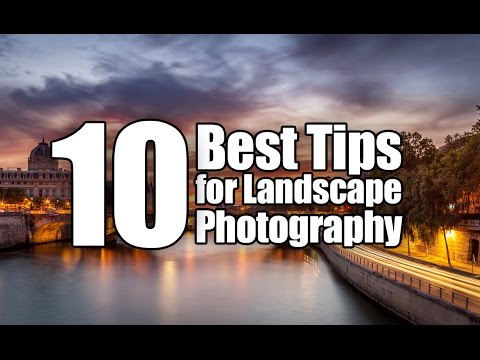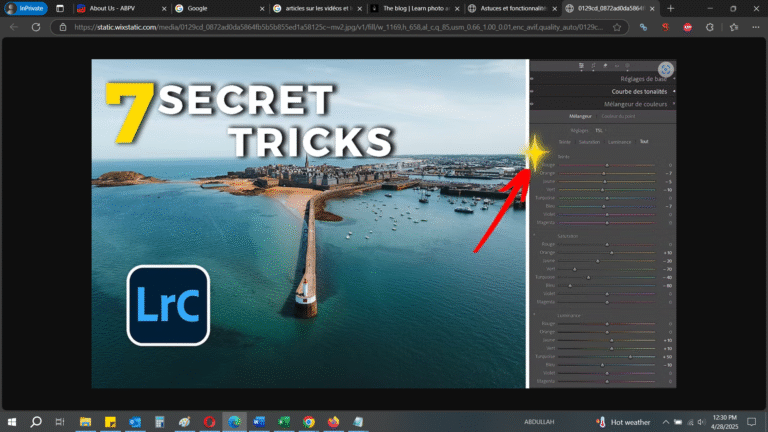Landscape photography is an art that requires patience, technique and a sense of observation. Whether you’re a beginner or an avid amateur, these 10 tips for successful landscape photography will help you capture stunning images.
10 Tips For Successful Landscape Photos:
1. Choose The Right Time
Natural light is the key element in landscape photography. The best times are golden hour (just after sunrise or before sunset) and blue hour (just before sunrise or after sunset).
These Moments Offer Soft Lights And Balanced Contrasts.
I’ve already said it quite a bit in various articles, but it’s not an obligation! But when it’s possible for you, go out and experience the light during these hours and you’ll see. You won’t regret it.
2. Take Care Of The Composition
Apply the rule of thirds by placing the elements of interest on highlights of the image. Use natural leading lines, such as rivers or paths, to guide the eye through the photo.
Learn More About Composition With This Article That I Link To.
3. Use A Tripod
A tripod is essential for sharp images, especially in low light or for long exposures. Make sure it is stable, especially in windy conditions.
To Help You Choose A Tripod, Similarly, I’ll Leave You A Link.
4. Adjust The Aperture And Depth Of Field
Choose a small aperture (F/8 to F/16) for a large depth of field, ensuring sharpness from foreground to background.
Now, if you want to integrate a foreground and have it be blurrier than the rest of the scene, that does that too! It’s perfect for guiding the viewer’s gaze. But in general, when a landscape is sharp as a whole, it’s the best in landscape photography, especially with wide-angle and ultra-wide-angle.
It’s Up To You To Experiment And Try All These Things, In Order To Vary
5. Play With Shutter Speed
Experiment with slow shutter speeds to capture the movement of a waterfall, clouds, and the sea in tow. Conversely, a fast speed will freeze the moment precisely. To learn more about long exposure, click here.
6. Use Filters
ND filter: reduces the amount of light for long exposures.
Polarizing Filter: Reduces glare and enhances the colors of the sky, surfaces, and water.
Gradient filter: balances the exposure between bright skies and darker ground.
I’ve already written an article about the accessories I recommend for landscape photography, don’t hesitate if it can help you.
7. Highlight A Foreground
An element in the foreground (rock, tree, flowers) adds depth and gives an immersive impression to your photo. This also allows (at times) the effect of frame composition within the frame.
8. Experiment With Weather Conditions
Don’t limit yourself to sunny days! Cloudy skies, fog or a storm can create spectacular and unique atmospheres.
9. Post-Processing: Enhance Your Images
Use software like Lightroom or Photoshop to adjust exposure, white balance, and contrast. Photographic retouching and development are very subjective… Find your “theme”, your favorite atmosphere, and color code and go all out!
10. Practice, Patience And Perseverance
Landscape photography takes time and experimentation. Revisit locations in different seasons, experiment with new angles, and take the time to observe before you shoot.
By applying these tips, you will significantly improve the quality of your landscape photos and develop your own style.
A mood board can also be interesting just before a shoot, in order to “preview” the places you are going to visit, as well as to have some compositional clues.
Keep some empty space in your mood board: surprise and the unexpected in landscape photography, there’s nothing better!
I hope you enjoyed these tips. Don’t hesitate if you have any questions or remarks, the comment space is there for that.
Author Bio
Francesca is a passionate and experienced content writer with over 10 years in the industry. Her writing journey has taken her across various topics — home security and CCTV systems to, property tips, camera, pics editing, even in-depth guides on choosing the right folding mattress and home improvement hacks etc. She can naturally take complex ideas and turn them into clear, engaging content that readers can actually use. Whether she’s writing about the latest trends in home design or breaking down the pros and cons of different surveillance systems, Francesca brings a thoughtful and relatable voice to every piece. When she’s not typing away at her desk, you’ll likely find her with a cup of coffee in hand, browsing through interior design blogs or planning her next DIY project.



